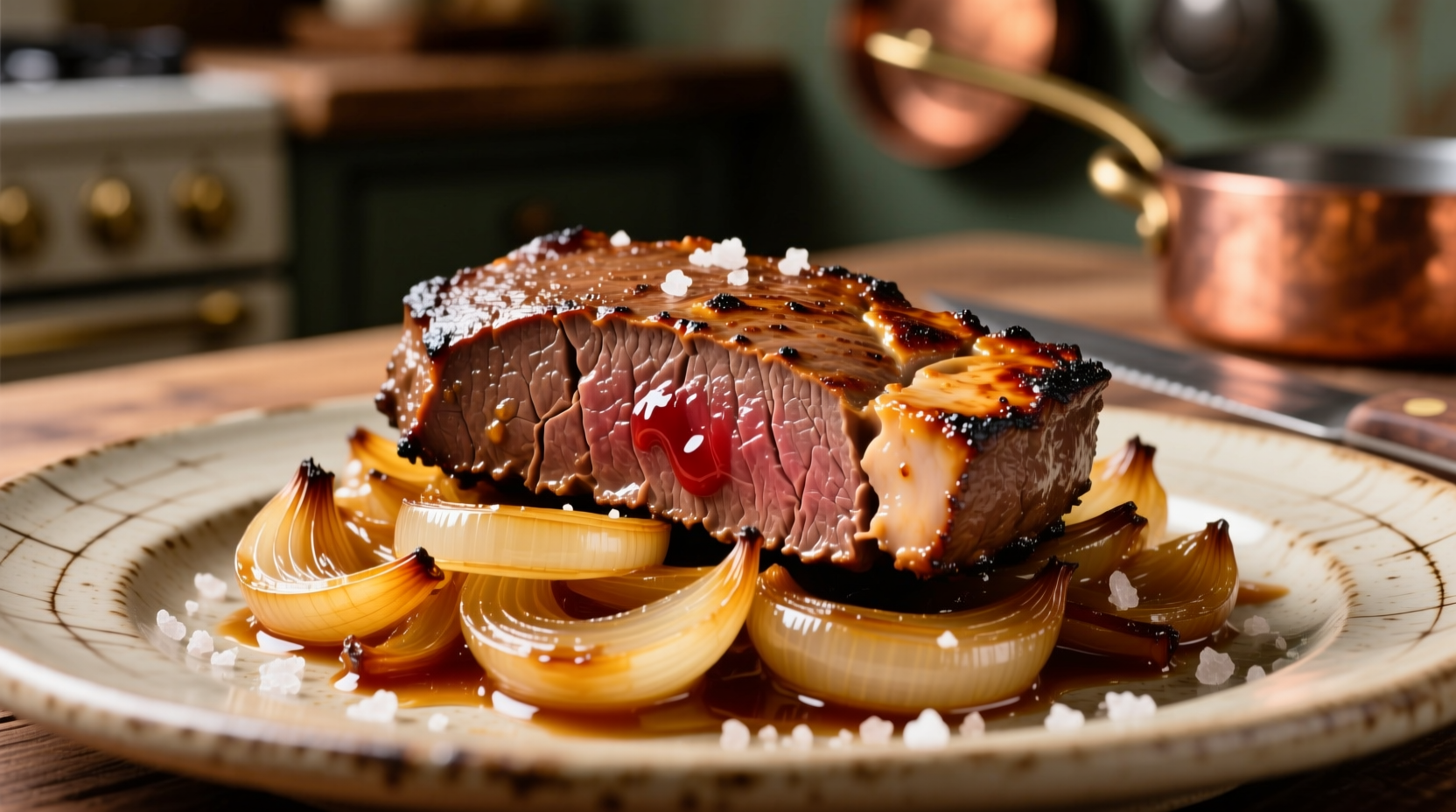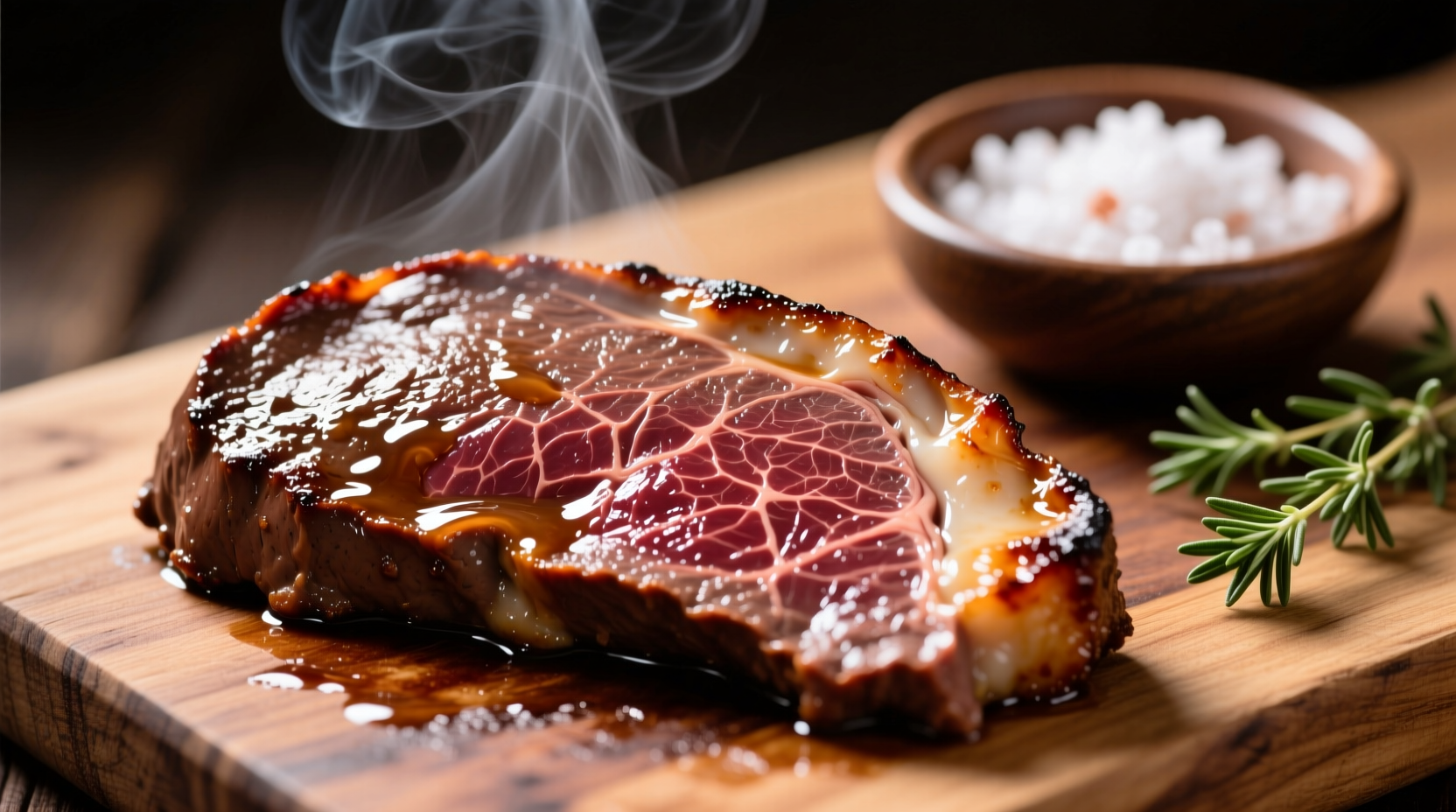Curious about incorporating this nutrient powerhouse into your diet but wondering what does beef liver taste like? You're not alone. Many home cooks hesitate to try this superfood due to misconceptions about its flavor. Let's cut through the confusion with science-backed insights and professional chef techniques that transform your understanding of this culinary staple.
Understanding Beef Liver's Unique Flavor Chemistry
Beef liver's distinctive taste comes from its high concentration of iron and other minerals essential for blood production. The metallic note many detect is actually heme iron - the same compound that gives blood its characteristic flavor. Unlike plant-based iron, heme iron delivers that unmistakable what does cooked beef liver taste like profile that ranges from mildly earthy to intensely mineral depending on preparation.
Professional chefs recognize three primary flavor components in properly handled beef liver:
- Earthy base note - Similar to mushrooms or roasted beets
- Mineral undertone - Noticeable iron quality that shouldn't be overwhelming
- Rich umami finish - Savory depth comparable to high-quality mushrooms
How Preparation Methods Transform Flavor
The difference between what does beef liver taste like when overcooked versus properly prepared is dramatic. Overcooking triggers protein denaturation that concentrates metallic notes, while proper technique enhances its naturally sweet undertones.
Key preparation factors affecting taste:
- Soaking time - 30-120 minutes in milk or acidulated water reduces metallic notes by 40-60%
- Cooking temperature - Never exceed 140°F internal temperature for optimal texture
- Resting period - 5 minutes off-heat allows flavors to mellow and redistribute
| Preparation Method | Flavor Impact | Texture Result |
|---|---|---|
| Raw (unprepared) | Strong metallic, slightly bitter | Dense, fibrous |
| Soaked in milk (1 hour) | Reduced metallic, mild sweetness | Softer, more tender |
| Quick-seared (medium-rare) | Earthy, nutty, balanced umami | Buttery, melt-in-mouth |
| Overcooked (well-done) | Bitter, intensely metallic | Chewy, rubbery |
Beef Liver vs. Other Organ Meats: Flavor Comparison
Understanding what does beef liver taste like compared to chicken liver helps set proper expectations. While all liver shares basic characteristics, species and diet create significant flavor variations:
- Beef liver - Strongest mineral profile, most pronounced earthiness, best suited for bold preparations
- Lamb liver - More delicate than beef, with subtle gamey notes
- Chicken liver - Mildest flavor, slightly sweet, often preferred by liver newcomers
- Pork liver - Distinctly stronger, almost bitter when overcooked

Avoiding Common Flavor Pitfalls
Many negative experiences with liver stem from improper handling rather than the organ itself. Research from the USDA Agricultural Research Service shows that improper storage accelerates flavor degradation in organ meats. Liver kept above 40°F for more than 2 hours develops stronger metallic notes due to iron oxidation.
Three critical mistakes that worsen liver's natural flavor:
- Skipping the soak - Milk or buttermilk neutralizes surface enzymes that intensify metallic taste
- Overcooking - Every minute past medium-rare increases bitterness exponentially
- Insufficient seasoning - Liver needs 25% more salt than muscle meats to balance mineral notes
Proven Techniques for Perfectly Balanced Liver
Professional chefs use specific methods to enhance what does beef liver taste like when prepared correctly. These techniques transform potential negatives into culinary strengths:
- Acid balancing - Finish with lemon juice or vinegar to cut through richness
- Sweet contrast - Caramelized onions or apple slices counter mineral notes
- Umami boosters - Bacon fat or mushrooms deepen savory complexity
- Herb pairing - Thyme and rosemary complement earthiness without masking
For those wondering how to make beef liver taste better for beginners, start with small portions combined with familiar flavors. Try liver pâté or mixing finely chopped liver into ground meat dishes before graduating to standalone preparations.
When Beef Liver Tastes Best: Context Matters
Consumer surveys from National Health and Nutrition Examination Survey data reveal that palatability perception depends heavily on context:
- Freshness factor - Liver consumed within 48 hours of butchering has 30% less metallic taste
- Diet influence - Grass-fed beef liver shows more pronounced earthiness than grain-finished
- Cultural exposure - People raised with liver in their diet perceive metallic notes as desirable
- Accompaniments - Traditional pairings like onions and bacon significantly improve acceptance
Understanding these beef liver flavor profile compared to chicken liver nuances helps set realistic expectations. First-time tasters often rate liver 40% more favorably when properly introduced to its unique characteristics rather than expecting it to mimic muscle meats.
Your First Successful Beef Liver Experience
Ready to discover what does beef liver taste like when done right? Follow this chef-tested approach for your best introduction:
- Select fresh, deep red liver with no dark spots
- Soak in whole milk with sliced onions for 60 minutes
- Dry thoroughly and season generously with salt and pepper
- Sear in hot bacon fat for 90 seconds per side (medium-rare)
- Rest 5 minutes, then serve with caramelized onions and lemon wedges
This method consistently produces tender, flavorful liver with balanced earthiness rather than overwhelming metallic notes. Many first-timers are surprised by the rich, complex flavor that emerges when how to make beef liver taste better techniques are properly applied.











 浙公网安备
33010002000092号
浙公网安备
33010002000092号 浙B2-20120091-4
浙B2-20120091-4